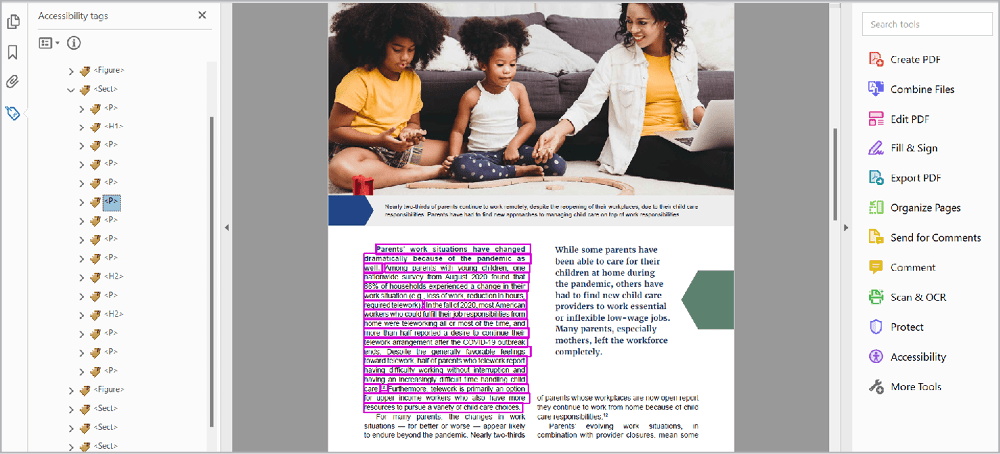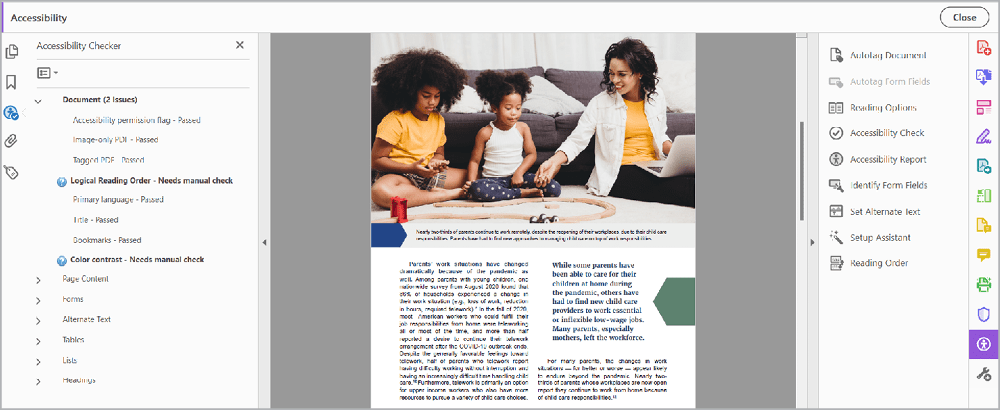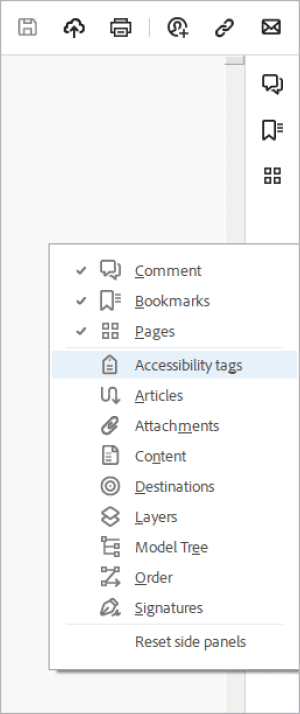Walking the Tag Tree in Adobe Acrobat
Learn how to perform this essential step in document remediation for accessibility, to ensure all content is properly tagged and in the correct order.

Checking PDF tags is an essential step in document remediation for accessibility. This is the only way to ensure all the content is properly tagged and in the correct order by performing a task commonly called walking the tag tree. Here’s how.
In Adobe Acrobat:
- Open your PDF, and access the tag tree.
- To see the tag tool, go to the Navigation pane, which is on the left side of Acrobat (older version) or on the right side (new version). Right-click within the pane and select Accessibility Tags.
- Control/Command-click a tag to open all tags, and then use your keyboard arrow keys to advance line by line down the tag tree. In accessibility, we refer to this as walking the tag tree.

Use your keyboard arrow keys to navigate down the tag tree, checking to make sure all the content is in there.
- Did all content get properly tagged in the InDesign export? If not, it will need to be remediated.
- Run the built-in accessibility test in Acrobat. In the new version of Acrobat, click Prepare for Accessibility in the Tools panel on the left side. Then choose Accessibility Check. If you’re using the older version of Acrobat, click Accessibility in your tools panel. (You will need to add it if you have not done so yet.) Then choose Accessibility Check.

Logical Reading Order and Color Contrast are two checks that require a manual review.
- Leave all the settings as the default, and select Start Checking. When you run the test, you’ll see two checks that need to be done manually: logical reading order and color contrast. Guess what! We’ve already walked the tag tree to ensure proper tagging and reading order, so that job is done.
Note: If you’ve made it to this point in your accessibility process, congratulations! The changes you’ve made so far likely won’t result in a 100% accessible document, but you know what? Your file is more accessible than it was when you started, and that progress is something to celebrate.
- Test the document using an advanced accessibility checking tool, such as CommonLook’s PDF Validator or axes4’s PDF Accessibility Checker (PAC) 2021. Note that these checkers are Windows-based; all the accessibility work I do is on PCs. If you’re working on a Mac, you will need to use Parallels or some sort of emulation software to use these checkers. The first time you run these checkers, you will get hundreds, if not thousands, of errors. Don’t panic! Most of these errors are duplicated throughout your document and can be quickly resolved through your manual review. Use these results as the next step in your accessibility journey. Keep learning about the more advanced steps you can take to help your content comply fully with accessibility standards.
- The last step: Test your document using screen readers—or, better yet, pay someone who relies on screen readers to test it for you. NVDA and JAWs are two tools my team uses to ensure the documents are usable by screen reader users. Our accessibility specialist put together a free online learning module that provides an overview of accessibility testing if you’d like to learn more.
This article was last modified on July 22, 2024
This article was first published on July 22, 2024





